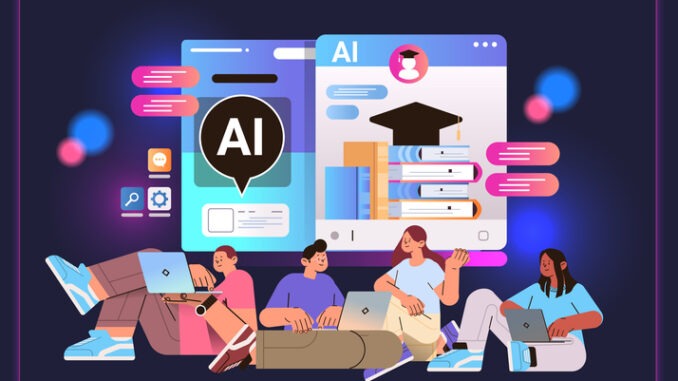Education policy is the backbone of educational systems worldwide, shaping how schools operate, how teachers teach, and how students learn. From curriculum standards and funding allocation to teacher certification and student rights, education policies govern every aspect of the academic experience.
As societies evolve, so do educational challenges. Policymakers must balance quality, equity, access, and accountability while navigating complex issues like standardized testing, digital learning, and educational equity. This article explores the importance of education policy, its key components, current challenges, and strategies for effective policy implementation.
What is Education Policy?

📜 Education policy refers to the laws, regulations, guidelines, and procedures that govern educational systems. These policies shape:
- Curriculum and learning standards
- Teacher qualifications and professional development
- Funding and resource allocation
- Student assessment and graduation requirements
- Equity, diversity, and inclusion in education
📍 Education policy provides a framework for maintaining quality and equity while ensuring accountability and innovation.
Key Components of Education Policy
1. Curriculum Standards & Instruction 📚
- Determines what students learn at each grade level.
- Includes subjects like math, science, literacy, and social studies.
- Policies may mandate bilingual education, STEM initiatives, or civics education.
📖 Example: The U.S. Common Core Standards provide uniform learning goals across states.
2. Funding & Resource Allocation 💰
- Determines how schools receive money from federal, state, or local governments.
- Impacts teacher salaries, infrastructure, and student resources.
- Equity concerns arise when low-income schools receive fewer resources.
📖 Example: Title I funding in the U.S. provides additional support for schools serving disadvantaged communities.
3. Standardized Testing & Assessment 📝
- Measures student achievement and school performance.
- Used for accountability, college admissions, and policy decisions.
- Critics argue high-stakes testing may pressure students and teachers.
📖 Example: SAT, ACT, and state-mandated exams influence student advancement and funding.
4. Teacher Certification & Professional Development 🎓
- Sets qualifications and licensure requirements for educators.
- Includes ongoing professional development.
- Policies may impact teacher shortages and workforce quality.
📖 Example: Finland’s education system requires all teachers to hold master’s degrees, leading to high teaching standards.
5. Equity & Inclusion in Education 🌍
- Ensures equal opportunities for students of all backgrounds.
- Addresses disparities in race, gender, disability, and socioeconomic status.
- Includes policies on special education (IEPs), bilingual learning, and anti-discrimination measures.
📖 Example: The Individuals with Disabilities Education Act (IDEA) in the U.S. mandates special education services.
6. School Choice & Alternative Education 🏫
- Policies determine public vs. private vs. charter school access.
- Expands options like homeschooling, magnet schools, and online learning.
- Controversial due to public funding debates.
📖 Example: School voucher programs allow parents to use government funds for private school tuition.
Major Challenges in Education Policy
🚧 1. Educational Inequality & Funding Gaps
✔ Wealthier districts often have better resources than low-income schools.
✔ Lack of access to technology and qualified teachers in underserved areas.
✅ Solution: Implement equitable funding formulas and technology grants for disadvantaged schools.
🚧 2. Standardized Testing & Accountability
✔ Heavy focus on test scores can limit creativity and holistic learning.
✔ Policies may penalize schools rather than support struggling students.
✅ Solution: Use alternative assessments like project-based learning and portfolio reviews.
🚧 3. Teacher Shortages & Retention
✔ Low pay, burnout, and policy constraints push educators out of the profession.
✔ High turnover rates impact student performance and school stability.
✅ Solution: Increase teacher salaries, mentorship programs, and mental health support.
🚧 4. Digital Learning & Technology Gaps
✔ The COVID-19 pandemic highlighted digital inequities in education.
✔ Rural and low-income students often lack access to high-speed internet and devices.
✅ Solution: Expand broadband access and provide free digital learning tools for all students.
🚧 5. School Safety & Mental Health
✔ Policies must address bullying, school shootings, and student mental health.
✔ The rise of social media and cyberbullying poses new challenges.
✅ Solution: Implement mental health programs, social-emotional learning (SEL), and crisis response plans.
Strategies for Effective Education Policy Implementation
1. Evidence-Based Policymaking 📊
✔ Use research and data to inform decisions.
✔ Evaluate the impact of policies with pilot programs and feedback loops.
📖 Example: Implementing social-emotional learning programs after researching their positive impact on student behavior.
2. Stakeholder Engagement & Collaboration 🤝
✔ Involve teachers, parents, students, and community leaders in policymaking.
✔ Ensure policies reflect the needs and perspectives of all stakeholders.
📖 Example: Holding community forums and focus groups before implementing new curriculum standards.
3. Professional Development & Teacher Support 🎓
✔ Provide ongoing training, mentorship, and resources for teachers.
✔ Ensure teachers understand and are prepared to implement new policies.
📖 Example: Professional development on inclusive teaching practices and technology integration.
4. Flexibility & Adaptability 🔄
✔ Allow for policy adjustments and regional adaptations based on local needs.
✔ Use continuous evaluation and feedback to refine policies.
📖 Example: Adjusting remote learning policies during the COVID-19 pandemic to accommodate digital divide issues.
The Future of Education Policy
🚀 Artificial Intelligence & Personalized Learning – AI-driven platforms will adapt to student needs and learning styles.
🌍 Global Education Standards – Collaboration among nations for universal learning benchmarks.
📡 Expansion of Online & Hybrid Learning – Increased flexibility and accessibility in education.
📢 Stronger Advocacy for Educational Equity – Focus on closing achievement gaps and supporting marginalized communities.
📍 Education policy will continue to evolve, balancing innovation, equity, and quality.
Final Thoughts: Navigating the Complexities of Education Policy
Education policy shapes the future of learning knowledge, impacting students, teachers, and communities worldwide. By addressing challenges such as funding inequality, teacher shortages, and digital access, policymakers can create inclusive, effective, and innovative educational systems.
💡 What education policy changes would you like to see in your country? Share your thoughts below! 🎓✨



